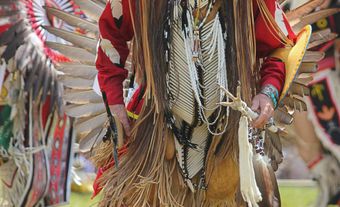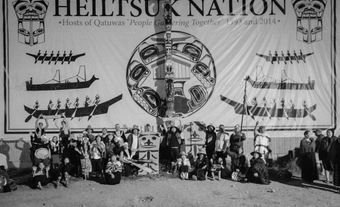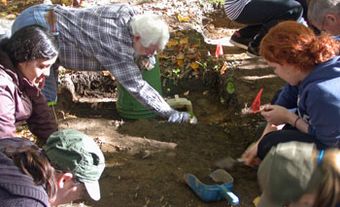
Around 1972 the Cree in the Bouclier region of the upper St-Maurice River in Québec decided to readopt the name Atikamekw (White Fish) used by their predecessors in the 17th century, and to abandon the name Tête-de-Boule, of uncertain origin, which had been applied to them since 1697. This name change does not necessarily imply a close ethnic relationship between the Atikamekw of the 17th century and those of today.
Following various social upheavals linked to epidemics at the time of contact and during the violent Iroquois Wars in the mid-17th century in these regions, a complete reorganization took place among nomadic hunters in Québec, and various groups, hitherto distinct, began to band together. It is known that ethnic boundaries remained relatively flexible over the years and that today's Atikamekw have discovered genealogical links with several neighbouring groups.
Although these people numbered 500-550 in the mid-17th century, by 1850 there were only about 150 scattered over 7000 km2 and divided into 2 major bands, the Kikendatch and the Weymontachie. The Manouane band appeared a little later (around 1865-75) as an offshoot of the Weymontachie.
Economic Conditions
Over the centuries, the Atikamekw of the St-Maurice region have led a hard life of hunting, fishing, trapping and wild berry picking around trading posts established in their region in the late 18th and early 19th centuries. They placed a high value on maintaining the autonomy of each nuclear family, but families combined into small winter cooperative or hunting groups, each with an experienced leader. Their economic activities were a compromise between traditional, seasonal activities and economic dependence upon the fur trade.
Despite a long history of involvement in the fur trade, continuous contact with missionaries did not begin until about 1837. After 1830 Atikamekw ancestral lands were actively coveted by lumber merchants. In 1910 the railway reached Weymontachie and the harnessing of the St-Maurice and Manouane rivers added to environmental and social pressures. A wage-earning class appeared during WWII, along with various social-security benefits.
Present Day
In 1996 the 1747 registered Atikamekw of the St-Maurice region were fighting to preserve their traditional cultural autonomy and a role in society equal to the non-Indigenous Québec culture. Since 1975 they have joined with the Innu to form the Atikamekw-Montagnais Council.
See also Aboriginal People: Subarctic.

 Share on Facebook
Share on Facebook Share on X
Share on X Share by Email
Share by Email Share on Google Classroom
Share on Google Classroom




